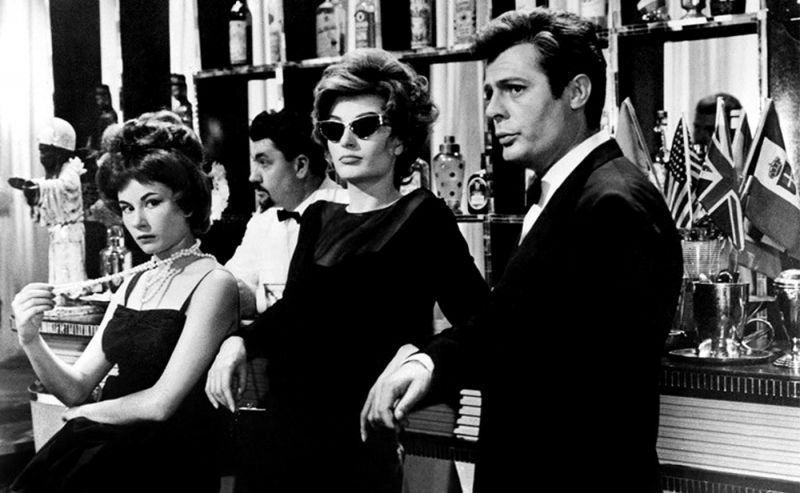
When Fellini arrived at Juliet of the Spirits, (1965) Fellini Satyricon (1969) and Amarcord (1973) he began venturing off into juxtaposed dreams and hallucinations, jungles of Freudian Christian fantasies, exaggerations and the grotesque of the circus. And yet it was this distinct revolutionary style of blending surrealistic images with gritty neo realism which would establish Fellini as one of the greatest and most influential filmmakers of the 20th century. A lot of people believed Fellini was abandoning his Italian neo realism roots when he began making La Dolce Vita and 8 ½, probably because his style began evolving and shifting into the realm of pure fantasy. Guido clearly represents Fellini and combines all his lusts, fears, sexual fetishes, desires and self doubts as a filmmaker and artist. A Jolly Good Fellini The story is about a director stuck for a story, an artist in a creative slump, in the familiar nel mezzo del cammin crisis. The story is about a film director named Guido who feels he is trapped and a prisoner of his own life and his own profession. Fortunately this stressful predicament led Fellini to come up with his autobiographical masterpiece 8 ½, which is now considered one of the greatest of all films about ‘making a film’ ever made. La Dolce Vita was Fellini’s most successful film to date, which caused Fellini to suffer from ‘Director’s Block’ when he began to go into production for his next film project. Unlike the more gentler themes which were explored in La Strada and Nights of Cabiria, there could be no room for a quirky innocent character like Giulietta Masina in Fellini’s latest film, as the world in La Dolce Vita was much bleaker, harsher and unforgiving. In particular in this article I’d like to talk about photography in Federico Fellini’s movies. But the Fellini’s cinema is not only about great stories and characters but also about a great cinematography and direction.
#Best federico fellini films movie#
When his extravagant film La Dolce Vita (1960) was released three years later it presented a drastic but defining shift away from Fellini’s 50’s films, as the story this time followed a soulless and vapid gossip columnist whose job chronicled fading aristocrats, second-rate movie stars, aging playboys and women of commerce. Don’t tell me what I’m doing I don’t want to know. His early films are more realist while the latest ones more surreal.

When he made his next film Nights of Cabiria in 1957 it was the sensational ‘Chaplinesque’ performance by Giulietta Masina that this time gained attention. An immediate box office hit, La Strada won the Academy Award for Best Foreign Film and it catapulted Fellini to the front ranks of that country’s greatest filmmaking talents. Images and themes such as the circus, the parade, the seashore, loneliness, the search for love, a figure suspended between earth and sky and women being portrayed as either sacred or profane or mother or whore. When he finally directed his first few features, The White Sheik (1952) and I Vitelloni (1953), it at first seemed to suggest Fellini was aiming to establish himself as more of a comedic filmmaker. But when La Strada (1954) was made, starring Fellini’s leading lady and wife Giulietta Masina, it apparently contained many of the iconic ‘Felliniesque’ trademarks which the director would constantly be known for all throughout the rest of his career. Federico Fellini began working as a radio writer, scriptwriter, cartoonist, and assistant for Italian filmmakers Roberto Rossellini and Pietro Germi. At least Sunrise, 2001: A Space Odyssey and 8 1/2 have healthy senses of humor, but Kane and Rules of the Game are the only movies in the top 10 with.


 0 kommentar(er)
0 kommentar(er)
